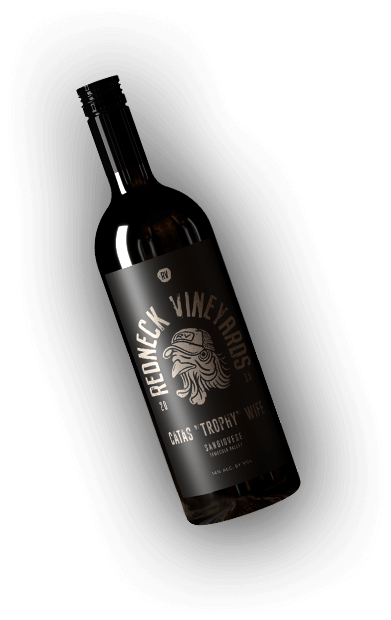Wine Tasting
Best Wine for Beginners
You may have always loved it, but as of recently, you’re starting to really get into wine. You have become more conscious of what wine labels say, looking up terms you’re unfamiliar with to expand your knowledge. As you try new varietals, you’re discovering how complex wine is, and it’s exciting!
However, there are so many wines out there that it can be overwhelming at first. It’s okay to go slow. Once you get the basics down, you can expand your wine journey, moving on to some of the more complex, rare wines — there’s plenty of time for that. As your knowledge grows, you may be the one introducing someone to wine, and that’s a special thing.
So, let’s dive into some of the most popular, easy-drinking wines.
What to Consider When Introducing Someone to Wine
Whether you’re new to the wine scene or are helping someone else discover all that it offers, there are some key considerations to remain mindful of with each wine you taste. Most experts recommend starting with lighter wines before exploring more complex creations. However, there are no “set” rules — have fun with it.
Let’s review some of the factors that influence the various wines you’ll try moving forward.
Taste and Flavor
When you break it down, wine is simply fermented grape juice. When you drink a wine, its flavor, aroma, and body depend on several factors, including its production techniques, the blend of grapes used, and how it was stored. When looking for the best wine for beginners, simple is often better. You want to learn how to identify each unique characteristic, so there’s no need to overwhelm your taste buds.
From dark fruits to leather, apples to spice, wine has many flavors, which is what makes tastings so exciting. To start, try an unoaked Pinot Grigio or a light-bodied Pinot Noir.
Body
Have you overheard wine lovers discussing a wine’s “mouth feel”? If so, they’re talking about the wine’s body — meaning how light or heavy it is in the mouth. The best wine for first-timers is often one that is light on the palette. Sauvignon Blanc is a great choice for beginners.
Aromatics
If you want to become knowledgeable about wine, you’ll need to learn how to differentiate between aromatic notes. Some wines are more aromatic than others, and this largely depends on the wine’s terroir, how it was aged, etc.
Feel free to experiment with different wines — Viognier and Grenache are both highly aromatic.
Sweetness
Some wine drinkers prefer wines on the sweeter side, while others are drawn to dry wines. How sweet a wine is will depend on its residual sugar, the varietal, alcohol content, the grapes’ harvest, and other factors. You will find wines across the sweetness scale, ranging from dry wines like Chardonnay and Cabernet Sauvignon to sweet dessert wines like Port.
Pinot Noir is a good choice for beginners because it is “off-dry” or “semi-dry.”
Best Wine for Beginners — Red Wine
The best wine for beginners is approachable and easy to drink.
When it comes to red wines, the red grape skin is what produces their distinct tannins and color.
The best red wines for first-timers include Malbec, Pinot Noir, Cabernet Sauvignon, and Syrah.
Of these, Pinot Noir is (again) probably your best bet, as it isn’t overly bold and is soft on tannins. Since it is light-bodied, it’s easy to drink and pairs well with many foods, ranging from mushrooms to chicken. If you choose a wine to pair with a special meal, be mindful of its characteristic notes. Pinot Noirs are often known for being earthy while offering notes of raspberry and cherry.
If you think you’d like a fruit-forward red wine that is medium to full-bodied, then Zinfandel is a great selection. This 2016 Zinfandel also offers a classic jammy flavor and aromas of black cherry and tobacco leaf. Whether you’re serving barbecued beef or chana dal, this is a great wine for first-timers as well as seasoned wine enthusiasts.
Best Wine for Beginners — White Wine
White wines have lower tannin levels than red wines, mainly because the grapes are often fermented without skins. When introducing someone to wine, there are several famous white wines that are an excellent starting point.
These include Chardonnay, Riesling, Sauvignon Blanc, and Pinot Grigio.
The wine you choose will depend on several things, especially if you plan to pair white wines with the food you’re serving.
For example, Sauvignon Blanc is light-bodied and pairs beautifully with light dishes, such as green vegetables, chicken, or fish with herbs. In contrast, Pinot Grigio can be light- or full-bodied, depending on where it’s produced. Check out Sweet Oaks 2020 Pinot Grigio to stay on the light-bodied theme. Although this wine is delicate, it’s also complex, offering aromas of fruit, herbs, and slight hints of pepper. This wine’s high acidity and fresh fruit flavor make it the perfect complement to Caesar salad, salmon, or cream-based pasta.
To switch things up, opt for a Chardonnay. You can expect to enjoy a full-bodied, dry wine that goes well with so many foods. Some Chardonnays are oaked, while others are unoaked. Those that are oaked often have a buttery texture with hints of spice and vanilla — like this 2019 Chardonnay. In contrast, unoaked varieties are crisp and vibrant in flavor — like this 2017 Chardonnay.
Exploring Wine to Find the Bottles You Love Most
Wine is meant to be enjoyed, so have fun with this process and don’t take it too seriously. You have plenty of time to become an expert, so take it slow and learn all you can about the wines you love most.
If you’re ready to explore many of the varietals discussed above and others, Sweet Oaks offers an exquisite yet approachable collection. Try Sweet Oaks wine and find your favorite today!



